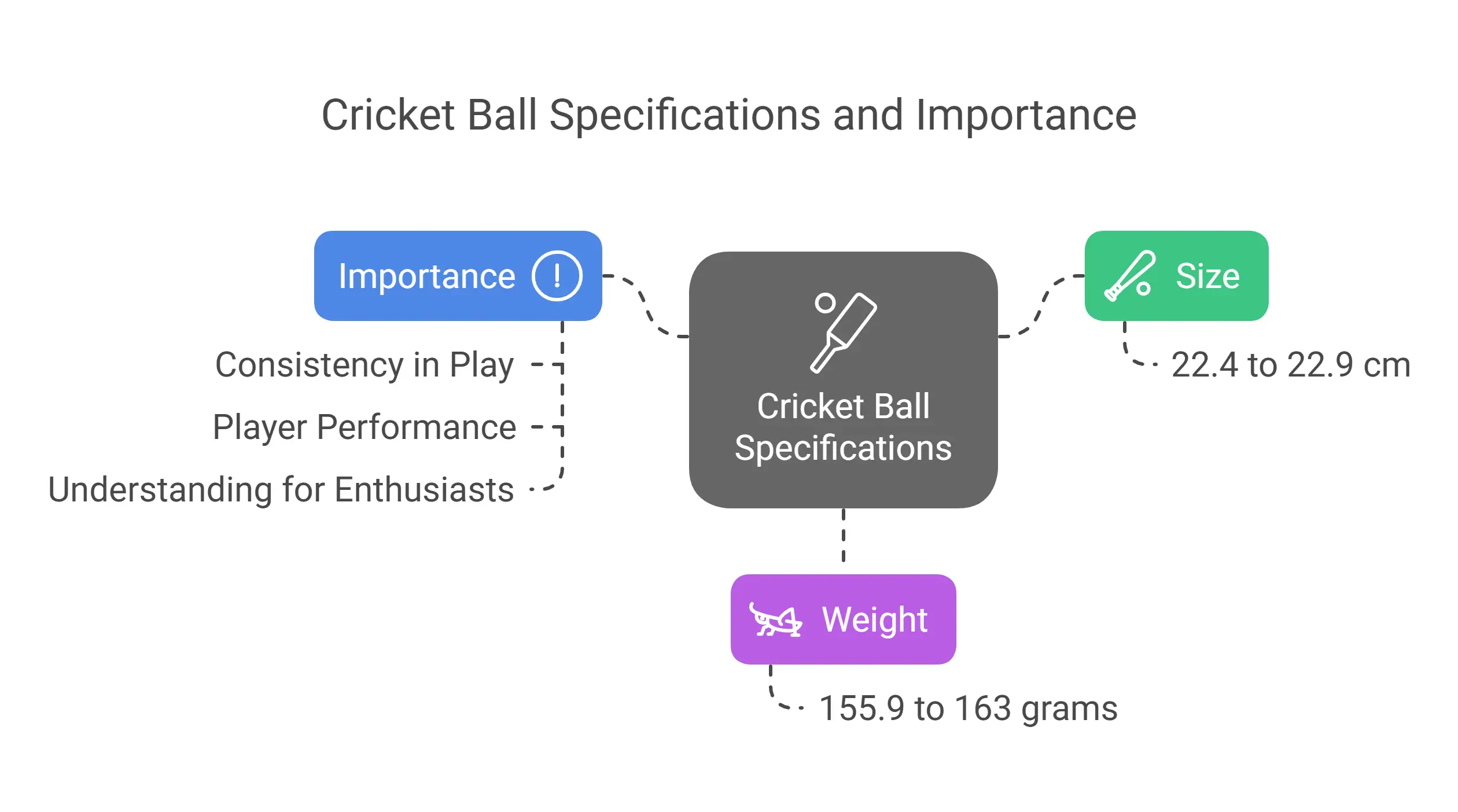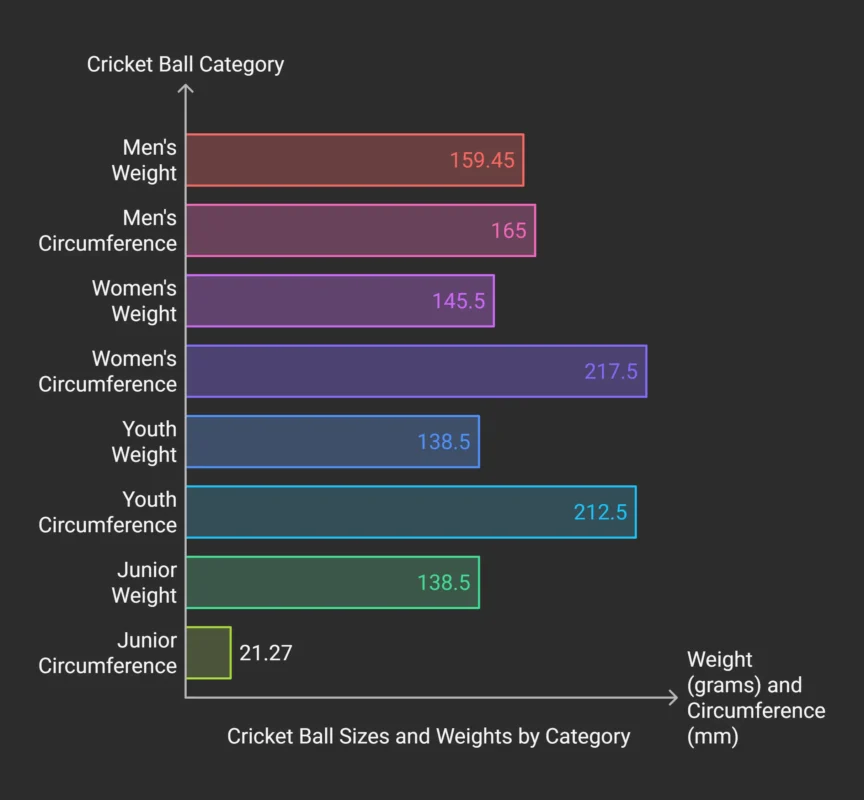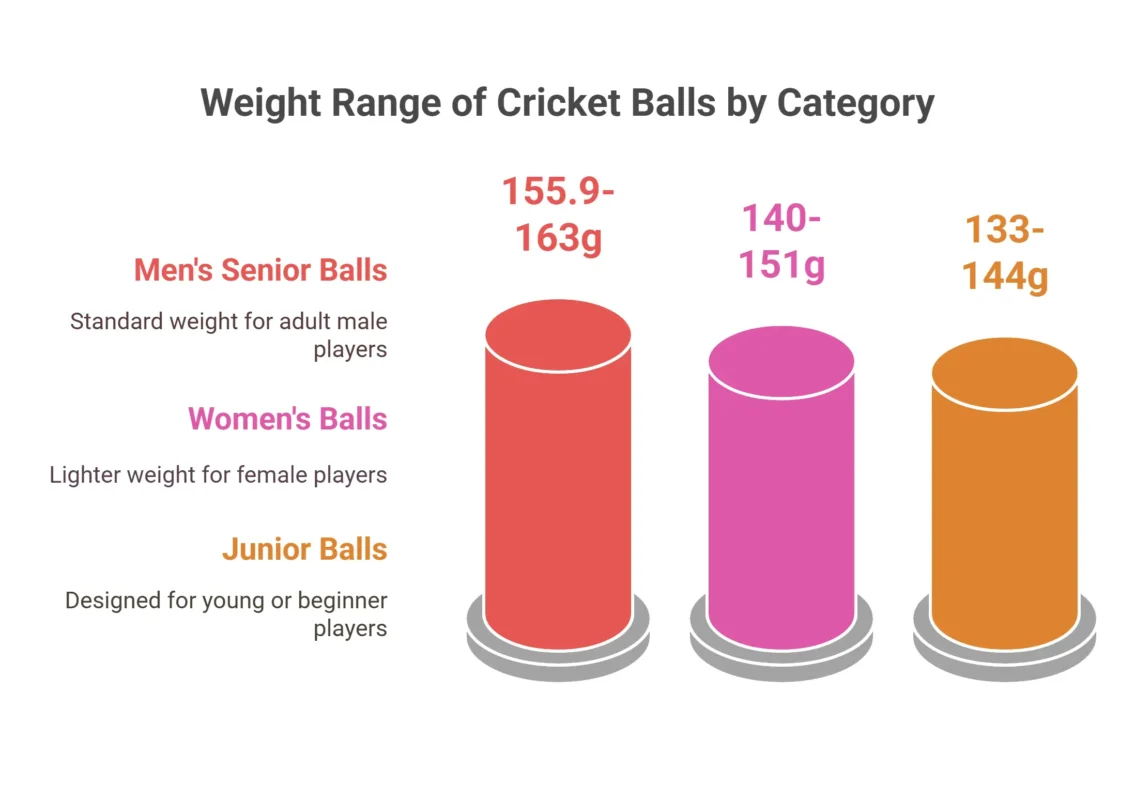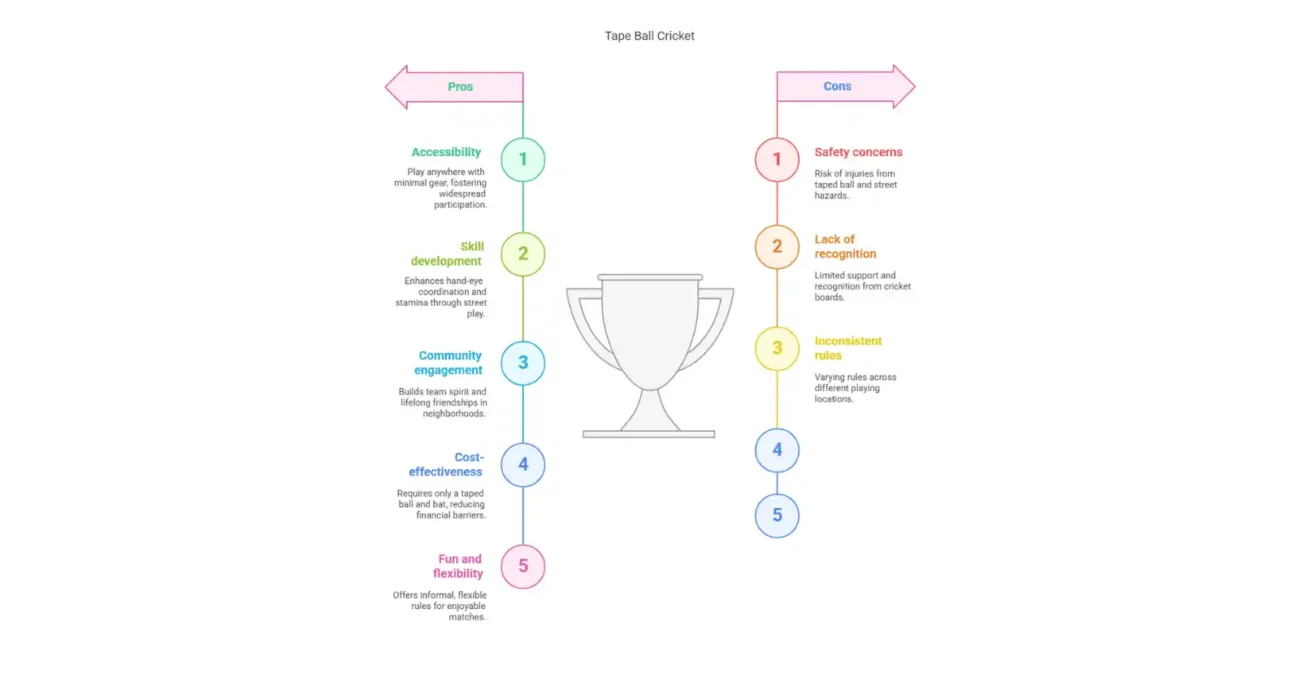Cricket Ball Weight Explained: Types, Sizes & Materials

As we are here to know about the weight of the cricket ball. Do you know how the cricket ball got started & how it was made first?
Cricket balls, once entirely handmade & now machine-manufactured with hand-stitching. Traditionally, they’re made of cork core winded with yarn and also surrounded by dyed leather. Red for Tests, white for 50 over matches. Kookaburra has 100+ years of legacy & is mostly used in international cricket.
Now let’s discuss about the ball size with weight, so that we can figure out what size is better.
What is the Cricket Ball’s Size And Weight?
Cricket Ball Size varies by category:

According to official laws, senior men’s balls must weigh 5.5-5.75 oz (155.9-163g), standard match requirements. Quality and material also vary by level. All balls are made of layered cork, string and a leather cover for durability.
Cricket Ball Weight according to MCC laws:

What is a Cricket Ball Made on Behalf of Weight?
Cricket balls are made from 3 primary materials: leather, cork and string. The core is cork and also rounded with nylon or wool. High-quality balls use a 4 piece leather cover, cheaper versions use 2. Leather is dyed red or white depending on the match type. Balls are stitched with six rows after shaping. British Standard BS 5993 regulates specifications and quality.
1. Leather and Cork Cricket Ball
A cricket ball is made of cork core wrapped tightly wound string and a durable leather cover. Stitched with six rows of nylon. High quality balls use 4 leather pieces. Heavier than baseballs for the cork and best for matches and training too.
2. Plastic Cricket Ball
Plastic cricket balls are made from polyvinyl chloride (PVC). Softer & safer alternative to leather or cork balls. Best for indoor games, kid’s matches, training and backyard play. Lower injury risk. Some have stitched so that it feels like a leather & cork made ball.
3. Rubber Cricket Ball
Rubber is used for cricket training balls. Heavier than plastic balls. Though less common. They’re best for skill development and safe practice sessions. Best alternative in coaching setups.
The Best Cricket Ball Manufacturing Brands
Kookaburra, Dukes and SG are the main manufacturers of cricket balls for international matches. India primarily uses SG, while England, Ireland and the West Indies prefer Dukes. Kookaburra balls are commonly used worldwide for red and pink test matches. Duke’s white balls were last used in the 1999 Cricket World Cup.
Can A Men’s Cricket Ball Be Used For Women’s Cricket?
A men’s cricket ball weighs between 155.9g- 163g, with a circumference from 224mm to 229mm. A women’s cricket ball weighs between 140g and 151g, with a circumference of 210mm to 225mm.
These differences in weight and also size are different in each category & gender. Kookaburra produces over 50 types of cricket balls, varying by grade, color and also size
FAQs
How Long Does It Take To Make A Cricket Ball?
It takes two to three weeks to make a cricket ball.
What Are the Rules of Using Cricket Balls in Matches?
Cricket law is to use a new ball at the start of each inning. If the ball is damaged, it must be replaced. In multi-day matches, a ball is replaced after a set number of overs, typically 75, for better fairness. In Test cricket, the fielding team can request a new ball after 80 overs.
Why Do Cricket Balls Have Different Weights for Men, Women, and Junior
Cricket balls are designed differently to suit the strength and also gameplay of each group. Lighter balls for women and juniors ensure better control, safety, and ease of play.
What Is the Difference Between a 2-Piece and a 4-Piece Cricket Ball?
A 2-piece cricket ball uses two leather halves and also is typically cheaper, used for practice or beginner levels. A 4-piece ball is more durable, better balanced, and also used in professional matches.
How Does Ball Weight Affect Bowling and Batting in Cricket?
Heavier balls offer more bounce and also swing, challenging batters. Lighter balls may offer less bounce but are easier to control, especially for younger players or training sessions.
Can You Use a Leather Cricket Ball for Indoor Practice?
It’s not recommended. Leather balls are too hard for indoor surfaces and can cause damage or injury. Use rubber or plastic balls for indoor or backyard training instead.


How did the weight of a cricket ball come about ?
Who decided on the particular weight a cricket ball should be
Very interesting subject , regards for posting.
Thanks for the kind words! If you’re passionate about cricket, you might enjoy some of the gear reviews and tips I’ve shared on the site. Feel free to explore!
Thank you! Always great to hear from readers. If there’s a cricket topic you’d like me to cover next, feel free to suggest it!